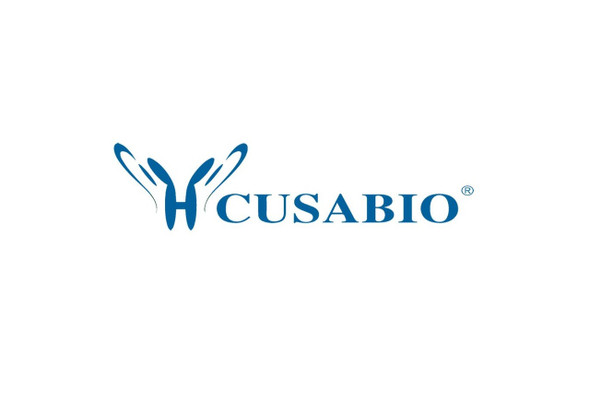Cusabio Virus & Bacteria Recombinants
Recombinant Murine polyomavirus Minor capsid protein VP2 | CSB-EP333002MKK
- SKU:
- CSB-EP333002MKK
- Availability:
- 3 - 7 Working Days
Description
Recombinant Murine polyomavirus Minor capsid protein VP2 | CSB-EP333002MKK | Cusabio
Alternative Name(s): Minor structural protein VP2
Gene Names: N/A
Research Areas: others
Organism: Murine polyomavirus (strain Kilham) (MPyV) (Murine pneumotropic virus)
AA Sequence: GAFLAVLAEVFDLASITGLSVESILSGEALTTAELLQSHINNLVVYGGLTEAEALAAVEVTPQAFAALTSLFPNFPQALGALAATEFTATGALTVGAAVSAALYPYYWDYRTPVADLNMALQIWYPDLDILFPGALPFARFVNYIDPANWAADLYRAVGRYFWERVQAAGINFIEQQMETGRELAMRSVTSLSETLSQYFENARWAVSGLSTSLYHGLESYYSQLGLSPIQQRQLARNLGHPQPYRYDLYDAPQLKGQVSATYVTKVDPPGGANQRSAPDWMLPLLLGLYGDLTPSWKDTLEELEAEEDGSHSQKAKRRKTKA
Source: E.coli
Tag Info: N-terminal 6xHis-tagged
Expression Region: 2-324aa
Sequence Info: Full Length of Mature Protein
MW: 41.4 kDa
Purity: Greater than 85% as determined by SDS-PAGE.
Relevance: Isoform VP2 is a structural protein that resides within the core of the capsid surrounded by 72 VP1 pentamers. Participates in host cell receptor binding together with VP1. Following virus endocytosis and trafficking to the endoplasmic reticulum, VP2 and VP3 form oligomers and integrate into the endoplasmic reticulum membrane. Heterooligomer VP2-VP3 may create a viroporin for transporting the viral genome across the endoplasmic reticulum membrane to the cytoplasm. Nuclear entry of the viral DNA involves the selective exposure and importin recognition of VP2 or Vp3 nuclear localization signal (shared C-terminus). Plays a role in virion assembly within the nucleus in particular through a DNA-binding domain located in the C-terminal region. A N-terminal myristoylation suggests a scaffold function for virion assembly (By similarity). Isoform VP3: structural protein that resides within the core of the capsid surrounded by 72 VP1 pentamers. Following virus endocytosis and trafficking to the endoplasmic reticulum, VP2 and VP3 form oligomers and integrate into the endoplasmic reticulum membrane. Heterooligomer VP2-VP3 may create a viroporin for transporting the viral genome across the endoplasmic reticulum membrane to the cytoplasm. Nuclear entry of the viral DNA involves the selective exposure and importin recognition of VP2 or Vp3 nuclear localization signal (shared C-terminus). Isoform VP3 plays a role in virion assembly within the nucleus (By similarity).
Reference: "The Polyomaviridae: Contributions of virus structure to our understanding of virus receptors and infectious entry." Neu U., Stehle T., Atwood W.J. Virology 384:389-399(2009)
Storage: The shelf life is related to many factors, storage state, buffer ingredients, storage temperature and the stability of the protein itself. Generally, the shelf life of liquid form is 6 months at -20?/-80?. The shelf life of lyophilized form is 12 months at -20?/-80?.
Notes: Repeated freezing and thawing is not recommended. Store working aliquots at 4? for up to one week.
Function:
Involvement in disease:
Subcellular Location:
Protein Families:
Tissue Specificity:
Paythway:
Form: Liquid or Lyophilized powder
Buffer: If the delivery form is liquid, the default storage buffer is Tris/PBS-based buffer, 5%-50% glycerol. If the delivery form is lyophilized powder, the buffer before lyophilization is Tris/PBS-based buffer, 6% Trehalose, pH 8.0.
Reconstitution: We recommend that this vial be briefly centrifuged prior to opening to bring the contents to the bottom. Please reconstitute protein in deionized sterile water to a concentration of 0.1-1.0 mg/mL.We recommend to add 5-50% of glycerol (final concentration) and aliquot for long-term storage at -20?/-80?. Our default final concentration of glycerol is 50%. Customers could use it as reference.
Uniprot ID: P24596
HGNC Database Link: N/A
UniGene Database Link: N/A
KEGG Database Link: N/A
STRING Database Link: N/A
OMIM Database Link: N/A









